AN ICONIC VIEW of the Grand Hotel on Mackinac Island, Michigan. The hotel’s front porch is the world’s largest at 660 feet, visible as you approach the island from the Straits of Mackinac. No motorized vehicles are allowed on Michigan’s Mackinac Island. All transportation is provided by horse and carriage or bicycle. Read more about this famous hotel in Elliott Brack’s perspective below.
IN THIS EDITIONTODAY’S FOCUS: Mandatory Uniform Policy Adopted at Summerour Middle School
EEB PERSPECTIVE: Peddling Around Mackinac Island, Michigan
ANOTHER VIEW: Steps USA Could Take To Improve Conditions for the Average Guy
UPCOMING: Aurora Theatre Offers Comedy; Elisha Winn Fair; StoryCorps Coming
NOTABLE: PCOM Gets Award from INSIGHT Into Diversity Magazine
RECOMMENDED READ: The Madonnas of Leningrad by Debra Dean
GEORGIA TIDBIT: Georgia State University Has Largest Labor Archive in Southeast
TODAY’S QUOTE: What We Don’t See in People Who Have Offended Us
MYSTERY PHOTO: Only One Person Recognized the Last Mystery
LAGNIAPPE: State Official on Aging Visits with Gwinnett Officials
TODAY’S FOCUS
Summerour Middle School adopts mandatory uniform policy
By Dorothy Jarrett, principal, Summerour Middle School
NORCROSS, Ga. Sept. 18, 2015 | Here at Summerour Middle School (SMS), our motto is “We are committed to creating a culture of excellence by working hard and being nice!” Every student can recite this and every teacher talks about what it really means with our students. We believe that our culture of excellence will ignite our success.
The decision to petition to Gwinnett County Public School’s district leaders to support a mandatory uniform policy at SMS was not my decision. My decision was to listen to the majority of my parents.
Four years ago after several years of researching the effects of school uniforms on academic achievement, it became clear to me that when “What you are wearing” is taken out of the education equation, academics go up and behavior issues go down.
The recent Atlanta Journal-Constitution (AJC) article, September 6, 2015, portrayed school uniforms as an ethnicity/race disparity issue. The writers never mentioned that in predominantly white private school’s, uniforms are a part of the culture. Uniforms are an important part of who they are. Why are uniforms the norm in most private schools? I contend that one reason is that these private schools want students focusing on academics.
I really took exception to this AJC article because not once did they cite any research that said uniforms are bad for academic achievement. Not once did it mention that all the primarily white private schools require their students to wear uniforms.
I listened to my SMS parents and I’m glad I did. While we have had voluntary uniforms over the last two years, parents wanted me to make them mandatory so that all students were required to wear the uniforms. This eliminates any arguments from those who did not want to wear uniforms. Parents understand the advantages financially and they believe their students would be more focused on academics. They are right.
The school uniforms are strengthening our sense of community at SMS. We believe, and studies show, that students in uniform will hold more positive perceptions of belonging in their school community. Fostering a sense of belonging furthers the goal of our advisement program.
We believe that uniforms will instill in students a sense of pride in themselves, their school, and their community, especially as we assimilate into our new middle school building. School uniforms empower us to stay more focused on teaching and learning.
Uniforms are cost effective and save parents money on clothing for school. Our vendor has worked with us to provide packages to cover a weeks’ worth of clothing for only $99. In addition, for those families in financial binds, our church partners have provided free uniforms. Finally, we have also established payment plans for families.
Summerour Middle School is experiencing a time of exciting change and opportunity. Student achievement is on the rise, and morale has been ignited by our move into our new building. We believe our mandatory school uniform policy along with our culture of excellence in everything we do, will ignite our success. Stay tuned for the end of the year data!
EEB PERSPECTIVEVisiting Mackinac Island, Michigan, and pedalling around
By Elliott Brack, editor and publisher, GwinnettForum
SEPT. 18, 2015 | Visiting Mackinac Island, Mich., had always intrigued both my wife and me. After years of pondering the area, a time in August presented itself, and we visited. It’s on the northern tip of the Lower Peninsula of Michigan. We flew to Detroit, rented a car, drove north, and crossed on the every-30-minute ferry.
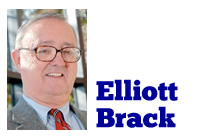 Mackinac Island has been a popular tourist attraction in Michigan for years. It even has a place in history, as the British in 1812 surprised a U.S. garrison and captured the island for a while. Later on, a spectacular hotel was built there, the Grand Hotel, opening in 1887, and remains a grand ole dame of the hotel industry today.
Mackinac Island has been a popular tourist attraction in Michigan for years. It even has a place in history, as the British in 1812 surprised a U.S. garrison and captured the island for a while. Later on, a spectacular hotel was built there, the Grand Hotel, opening in 1887, and remains a grand ole dame of the hotel industry today.
Perhaps the one singular aspect of the island is that no automobiles are allowed. The 18.84 square mile island’s transportation gives you choices: horse-drawn carriages, bicycle or on foot. Bicycles are everywhere, as is the constant odor from the horses. (A key job on the island focuses on workers constantly scooping up the manure off the streets.)
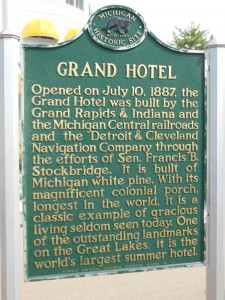 Today there are 27 accommodations vying for the tourist dollar, from $100 a night, to a limited number of hotels charging up to $1,000 a night for lodging, everything from economy to exorbitant.
Today there are 27 accommodations vying for the tourist dollar, from $100 a night, to a limited number of hotels charging up to $1,000 a night for lodging, everything from economy to exorbitant.
Yes, we bit the bullet and stayed at the Grand. We suspect it’s not what it used to be. It certainly charges enough, but the other hotels it compares itself to, the Broadmoor, the Greenbrier and Boca Raton, are much more elegant and more up-to-date.
Because of the harsh weather, Mackinac is virtually closed during the winter. The island blossoms to sometimes 15,000 people a day during the short summer season (May to October), but has only about 500 permanent residents during the winter.
Renting a bicycle for an eight-mile circular tour of the island is a pleasure. You travel on a State of Michigan paved road, which is virtually flat. There’s a certain serenity about such biking, as you don’t have to worry about cars, or hills, and see only an occasional horse-drawn wagon with passengers.
You’re on Lake Huron, and the fresh water laps the shores. The area is rocky, and many people, especially children, stack up rocks along the shore, some as much as three feet, neatly balanced.
Should you go:
- Consider either staying at a small hotel or bed-and-breakfast, or lodge on the mainland and visit the island for a day. Many take their bikes on the ferry.
- There are plenty of restaurants to enjoy. Most are local, though some familiar brands. There are no drive-in or truly fast-food chains.
-
Visit the Grand Hotel, perhaps to partake of the lunch buffet ($$$). If you only want to walk into the hotel and check it out, it’ll cost you $10.
- Watch out. You may gain weight just walking by the many, many fudge shops on the island. Most fudgeries have at least two locations, sometimes just blocks apart.
While you are that far north in Michigan, be sure to visit Traverse City, on the eastern shore of Lake Michigan. And consider a visit to Sault Sainte Marie, and its locks. The Upper Peninsula is only a five-mile long suspension bridge away from Mackinac City.
After you travel 100 miles north of Detroit, northern Michigan is virtually undeveloped, with operating farms, but much more tree coverage. Because of its rural nature, and flatness of land, it really reminds us of South Georgia.
ANOTHER VIEWSteps USA could take to improve conditions for the average guy
By George Wilson
SEPT. 18, 2015 | Globalization and technological changes have worked to eliminate good paying manufacturing jobs in America. Among ordinary men and women this has had a profound change in their lives. Many have tried to adjust by taking the time to get more education and to be retrained; even going into debt with student loans. Many others have taken multiple low paying jobs. What we see is profits at record levels and the rich getting richer. American families face financial hardships at a time “when the average CEO makes about 300 times what the average worker makes.”
![]() Moreover, real wages are stagnant and the middle class is disappearing. All the Republicans running for President are offering up the same old stale bromides with no new ideas. Donald Trump is right; they are all dancing as puppets to their oligarchy masters.
Moreover, real wages are stagnant and the middle class is disappearing. All the Republicans running for President are offering up the same old stale bromides with no new ideas. Donald Trump is right; they are all dancing as puppets to their oligarchy masters.
What has happened is an engineered inequality through tax policy that favored the very top income people and corporations. While productivity and profits have gone up, ordinary working people have not participated in this increased wealth. We are out of balance with our national income distribution. The confiscation of wealth by the upper classes has indirectly resulted in a deterioration of some neighborhoods, families, and a national failure of collective responsibility.
Listed below are some solutions and we don’t have to wait for the federal government:
- Raise the minimum wage to $15 per hour;
- Raise the employment rate by investing in badly needed infrastructure, including rapid rail for the entire metro Atlanta area;
- Expand Medicaid in Georgia as the Affordable Care Act intended.
These measures will insure increased employment, come close to a livable wage for Georgians and increase prosperity for everyone.
Finally, other structural solutions could include: make it easier for unions to organize; eliminate “legalized graft” by lobbyists; and have special citizen councils draw political districts, thereby eliminating gerrymandering.
IN THE SPOTLIGHTThe Piedmont Bank
 The public spiritedness of our sponsors allows us to bring GwinnettForum.com to you at no cost to readers. The Piedmont Bank, which opened its doors on June 30, 2009, is a full-service bank, with four locations, with its home offices at 5100 Peachtree Parkway in Norcross; and other locations at 185 Gwinnett Drive in Lawrenceville; east of Interstate 85 near Suwanee at Old Peachtree and Brown Roads; and in Dunwoody at 1725 Mount Vernon Road. It has a capitalization of $51 million, and more than $425 million in assets now. The bank is making substantial business and personal loans. Its directors include Paul Donaldson, Robert D. Cheeley, John J. Howard, Monty G. Watson (who is chairman), Robert J. Ratliff and T. Michael Tennant, while James E. Stephenson is an advisory director. Deposits in The Piedmont Bank are insured by the FDIC.
The public spiritedness of our sponsors allows us to bring GwinnettForum.com to you at no cost to readers. The Piedmont Bank, which opened its doors on June 30, 2009, is a full-service bank, with four locations, with its home offices at 5100 Peachtree Parkway in Norcross; and other locations at 185 Gwinnett Drive in Lawrenceville; east of Interstate 85 near Suwanee at Old Peachtree and Brown Roads; and in Dunwoody at 1725 Mount Vernon Road. It has a capitalization of $51 million, and more than $425 million in assets now. The bank is making substantial business and personal loans. Its directors include Paul Donaldson, Robert D. Cheeley, John J. Howard, Monty G. Watson (who is chairman), Robert J. Ratliff and T. Michael Tennant, while James E. Stephenson is an advisory director. Deposits in The Piedmont Bank are insured by the FDIC.
- For more information, call 770-246-0011 or visit http://www.piedmontbankonline.com.
- For a list of other sponsors of this forum, go to: Our sponsors.
Drop us a line
We encourage readers to submit feedback (or letters to the editor). Send your thoughts to the editor at elliott@brack.net. We will edit for length and clarity. Make sure to include your name and the city where you live. Submission of a comment grants permission for us to reprint.
Please keep your comments to 300 words or less. However, we will consider longer articles (no more than 500 words) for featuring in Today’s Issue as space allows.
- SEND FEEDBACK AND LETTERS: elliott@brack.net
Aurora Theatre presenting Durang’s comedy starting Oct. 1
A frenzied portrayal of sibling rivalry, Christopher Durang’s award-winning Vanya and Sonia and Masha and Spike plays the Aurora Theatre, October 1-25, as part of the 20th Anniversary Peach State Federal Credit Union Signature Series! Hilarity will ensue in this side-splitting tale of an unexpected and unforgettable family reunion! A co-production with Horizon Theatre Company, this humorous plays takes a look into the rollercoaster of emotions derived from being a part of a “celebrity” family while poking fun at the generational gap between Generation X and millennials.
 Woven with nods to popular Chekhov plays, Durang’s uproarious comedy tells the tale of adopted siblings Vanya and Sonia, living a tranquil life in their childhood Pennsylvania farmhouse, as their whirlwind sister Masha travels the world as a movie star and supports them from afar..
Woven with nods to popular Chekhov plays, Durang’s uproarious comedy tells the tale of adopted siblings Vanya and Sonia, living a tranquil life in their childhood Pennsylvania farmhouse, as their whirlwind sister Masha travels the world as a movie star and supports them from afar..
Directed by Aurora’s Associate Artistic Director Justin Anderson, the 2013 Tony Award Winner for Best Play juggles the trials and tribulations of dealing with family, while sprinkling knee-slapping quips throughout. Since its run at Horizon this past May, the production has garnered critics’ acclaim and is Suzi recommended! With some of the region’s leading actors and Aurora Theatre veterans William S. Murphey (Vanya), LaLa Cochran (Sonia), Tess Malis Kincaid (Masha) and Edward McCreary (Spike), this outright hilarious and occasionally moving show is a must-see!
Vanya and Sonia and Masha and Spike is presented at Aurora Theatre, October 1-25. A discount weekday matinee will be offered on Wednesday, October 21 at 10 a.m. for $20-$30 per person. Regular show time tickets can be purchased for $20-$55 per person online at tickets.auroratheatre.com or by calling the Box Office at 678-226-6222.
- Show times are Wednesday – Friday: 8 p.m.; Saturday: 2:30 p.m. and 8 p.m.; and Sunday: 2:30 p.m.
Historical Society’s Elisha Winn Fair to be held in Dacula Oct. 3-4
The 37th Elisha Winn Fair will be on Saturday and Sunday, October 3-4, from 10 a.m. until 5 p.m. both days. There will be free onsite parking. The fair is hosted by the Gwinnett Historical Society.
The Fair features arts and crafts, and takes place at the Winn House 908 Dacula Road, Dacula. This year’s event gains historical significance because plans for forming the new Gwinnett County were conducted at this location prior to 1818, the year Gwinnett County was officially created.
Along with tours of the original two-story house built circa 1812, complete with period furnishings, there are multiple outbuildings open to visitors, including an 1875 one-room school house depicting a typical early-on school day; an operating blacksmith shop; an 1820s jail house; a 1917 barn; plus antique farm equipment, and a historical railroad memorabilia display.
There will be re-enactors with cannon and other military artifacts plus vendors, food and live bluegrass/country music on stage both days. Featured musicians will be the famed Skillet Lickers.
- For vendor applications, please visit gwinnetths.org/winnfair.html or for more info call Betty Warbington at 770-963-6301.
StoryCorps coming to Norcross Branch Library on Oct. 4
 Gwinnett Library will present StoryCorps. One of the largest oral history projects of its kind, StoryCorps travels the country collecting the stories of everyday people who get to take the microphone and interview each about their lives. Come and hear inspirational, courageous stories shared by Gwinnett County’s own Vietnamese citizens.
Gwinnett Library will present StoryCorps. One of the largest oral history projects of its kind, StoryCorps travels the country collecting the stories of everyday people who get to take the microphone and interview each about their lives. Come and hear inspirational, courageous stories shared by Gwinnett County’s own Vietnamese citizens.
This bilingual program takes place on October 4 at 3 p.m. at the Norcross Branch, 6025 Buford Highway. It is free to attend and a reception will follow.
- For more information, call 770-978-5154 or visit gwinnettpl.org.
Snellville could get new Kroger at U.S. 78 and Rosebud Road
Snellville has received applications for a 123,000-square-foot Kroger Marketplace store and fuel center located at 1000 Athens Highway at Rosebud Road. The case will be considered by the Planning Commission at the Oct. 27 regular meeting and is scheduled for first and second Mayor and Council readings on Nov. 9 and Dec. 12 respectively.
The store will be different than other Kroger stores near the city as it will have a clothing section, a cafe and a gas station. The developers have expressed a desire to be annexed into the city and notification of the annexation will be mailed to the county this week.
NOTABLEPCOM attains award for excellence in diversity in higher education
 The Philadelphia College of Osteopathic Medicine (PCOM) has received the 2015 Higher Education Excellence in Diversity (HEED) Award from INSIGHT Into Diversity magazine, the oldest and largest diversity-focused publication in higher education. As a recipient of the annual HEED Award—a national honor recognizing U.S. colleges and universities that demonstrate an outstanding commitment to diversity and inclusion—PCOM will be featured, along with 91 other recipients, in the November 2015 issue of INSIGHT Into Diversity magazine. This is the first time PCOM has been named as a HEED Award recipient—an honor that has never been bestowed upon an osteopathic medical school.
The Philadelphia College of Osteopathic Medicine (PCOM) has received the 2015 Higher Education Excellence in Diversity (HEED) Award from INSIGHT Into Diversity magazine, the oldest and largest diversity-focused publication in higher education. As a recipient of the annual HEED Award—a national honor recognizing U.S. colleges and universities that demonstrate an outstanding commitment to diversity and inclusion—PCOM will be featured, along with 91 other recipients, in the November 2015 issue of INSIGHT Into Diversity magazine. This is the first time PCOM has been named as a HEED Award recipient—an honor that has never been bestowed upon an osteopathic medical school.
“Diversity is a core value at PCOM,” said Jay S. Feldstein, DO, president and CEO. “As a post-graduate institution that trains osteopathic physicians and health care professionals, our students need to reflect the patients and the families they will care for and serve. Our goal is to integrate diversity into the fabric of our soul. It starts with our Board of Trustees, our leadership team, our faculty, our employees and our student population.”
INSIGHT Into Diversity magazine selected PCOM for its commitment to diversity and inclusion in every aspect of the College, from its recruitment efforts, to its academic offerings, to the physical space on its Philadelphia and Georgia campuses. Much of this activity has stemmed from the formation of the President’s Diversity Council, a group of individuals from both campuses who make recommendations to Dr. Feldstein on matters of equity and diversity, and provide strategic execution of the College’s Diversity Plan.
- For more information about the 2015 HEED Award, visit insightintodiversity.com.
The Madonnas of Leningrad
By Debra Dean
 “The Hermitage Museum in Leningrad (St. Petersburg) has long been a treasure trove of art. As the German front neared the city in the early stage of World War II, museum officials took steps, shipping the art to other locations, or stored the many paintings, statues, drawings, furniture and other items in its deep cellars. The book takes place during the three-year siege of the city, which Germany never captured. With the vast rooms of the Hermitage void of art, its tour guides and other workers who cared for the museum could see in their mind what previously hung on the walls, or stood in its galleries. The depth of the siege, the lack of provisions, the bombing of the city, and the terrible conditions are outlined in this magical book. You get a glimpse into the depth of this world-famous museum, told brilliantly.” — eeb
“The Hermitage Museum in Leningrad (St. Petersburg) has long been a treasure trove of art. As the German front neared the city in the early stage of World War II, museum officials took steps, shipping the art to other locations, or stored the many paintings, statues, drawings, furniture and other items in its deep cellars. The book takes place during the three-year siege of the city, which Germany never captured. With the vast rooms of the Hermitage void of art, its tour guides and other workers who cared for the museum could see in their mind what previously hung on the walls, or stood in its galleries. The depth of the siege, the lack of provisions, the bombing of the city, and the terrible conditions are outlined in this magical book. You get a glimpse into the depth of this world-famous museum, told brilliantly.” — eeb
- An invitation: what books, restaurants, movies or web sites have you enjoyed recently? Send us your recent selection, along with a short paragraph (100 words) as to why you liked this, plus what you plan to visit or read next. –eeb
Largest collection of labor archives in Southeast at Georgia State
The Southern Labor Archives is committed to “collecting, preserving and making available the documentary heritage of Southern workers and their unions, as well as that of workers and unions having an historic relationship to the region.” Holdings are particularly strong in the areas of aviation, machinery, and aerospace; the textile and garment industry; building trades; the nursing profession; the communications industry; government, office, and retail workers; furniture and wood industries; and union activities in the Southeast.
The largest accumulation of labor records in the Southeast, the Archives includes materials dating from 1884 to the present and comprises union records, the personal papers of individuals, photographs, artifacts, periodicals, film and sound recordings, and oral history interviews.
Georgia State University (GSU) history professor Merl E. Reed realized the need for a labor archives in Atlanta when he learned about the Texas Labor Archives, housed at the University of Texas at Arlington. Reed collaborated with leaders in the local labor community, who in 1969 planned a dinner to honor the labor attorney Joseph Jacobs, with the proceeds earmarked for founding the Archives. Approximately 600 people attended, and the event raised $3,750 for the future Archives.
On April 28, 1970, GSU representatives, including Reed, history professor Gary Fink, and library administrators, along with local labor union representatives signed a memorandum of understanding establishing the Southern Labor Archives. The labor community pledged continuing financial support, and the university agreed to house and administer regional labor records at the library. In July 1971 David B. Gracy II, an archivist from Texas, became the first director of the Southern Labor Archives. The archives’ first significant collection, one box of material from William T. Clitheroe, a retired member of the International Association of Machinists and Aerospace Workers (IAM), arrived on July 15, 1971.
Upon Gracy’s departure in 1976, Leslie S. Hough was hired as the Archives’ second director. Under his guidance, the collections continued to grow as did the Archives’ national reputation. Collections of note that came in under Hough’s administration include the records of the Professional Air Traffic Controllers Organization (PATCO), the papers of former U.S. secretary of labor W. J. Usery Jr., the records of the United Garment Workers of America, and the papers of Stetson Kennedy, a renowned investigative reporter and labor activist. In 1992 the International Association of Machinists and Aerospace Workers made the Southern Labor Archives its official repository.
Hough left the Archives in 1992. After his departure the duties of the director were gradually assumed by the archivist for the collection. By 2015 the Archives housed more than 500 collections covering work and workers across the Southeast and the nation.
In addition to its papers and records collections, the Archives also collects oral history interviews with leaders of the labor movement, workers, and representatives from associated communities. Stories are recorded through interviews that are autobiographical in nature and cover the subjects’ personal backgrounds, work histories, and participation in the labor movement or their chosen professions.
In 2010 Georgia State University Library began a digitization program that provides online access to its collections. Selections from the Southern Labor Archives include the underground newspaper Great Speckled Bird, the records of PATCO, and photographs and manuscripts documenting unions, work, and workers from across the Southeast
- To access the Georgia Encyclopedia online, go to http://www.georgiaencyclopedia.org
Few clues in this issue’s Mystery Photo
A swing bridge and a few bollards doesn’t give you many clues as to where this edition’s Mystery Photo is located. But take a guess. Send your answers to elliott@brack.net and be sure to include the town where you live.
 Ruthy Lachman Paul of Norcross responded about last edition’s Mystery Photo. It is “Château de Chenonceau, also known as Castle of Women. The location of the Loire valley close enough to Paris, about 300 km southwest – a fact that only contributed to the extent of its appeal. French aristocrats chose the Loire because of its beauty, scenery and convenient traffic elevation.” The photo was submitted by Ann Royster of Shelby, N.C.
Ruthy Lachman Paul of Norcross responded about last edition’s Mystery Photo. It is “Château de Chenonceau, also known as Castle of Women. The location of the Loire valley close enough to Paris, about 300 km southwest – a fact that only contributed to the extent of its appeal. French aristocrats chose the Loire because of its beauty, scenery and convenient traffic elevation.” The photo was submitted by Ann Royster of Shelby, N.C.
Aging confab
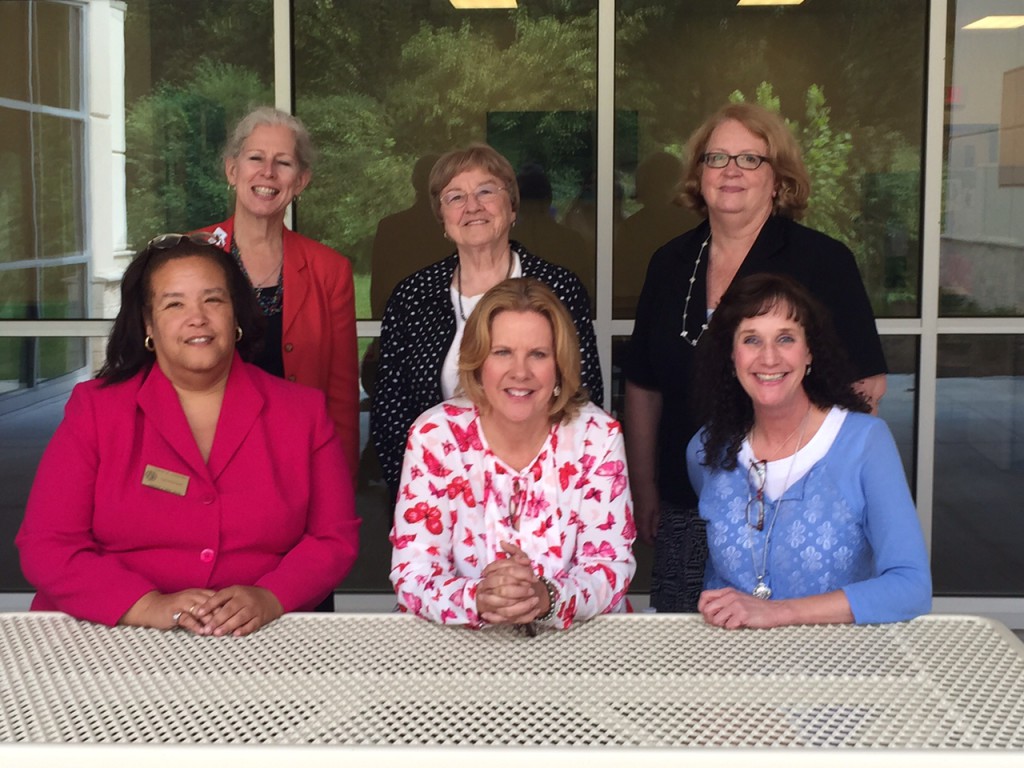 New Georgia Department of Human Services Commissioner Robyn A. Crittenden recently met with Senator Renee Unterman and Gwinnett Senior Services Manager Jamie Cramer at the Gwinnett Senior Services Center in Lawrenceville to discuss aging issues and challenges. Cramer mentioned the value of working collaboratively to seek local solutions to challenges for our aging population. Following the meeting, the group toured the state-of-the-art Gwinnett senior meals kitchen area and had lunch at the center. Among attendees were, from left on the front row, Crittenden, Senator Unterman and Jamie Cramer, Manager, Gwinnett County Senior Services. On the back row are Aging Advocates Melanie McNeil, Ann Williams, and Kathy Floyd, executive director of the Georgia Council on Aging.
New Georgia Department of Human Services Commissioner Robyn A. Crittenden recently met with Senator Renee Unterman and Gwinnett Senior Services Manager Jamie Cramer at the Gwinnett Senior Services Center in Lawrenceville to discuss aging issues and challenges. Cramer mentioned the value of working collaboratively to seek local solutions to challenges for our aging population. Following the meeting, the group toured the state-of-the-art Gwinnett senior meals kitchen area and had lunch at the center. Among attendees were, from left on the front row, Crittenden, Senator Unterman and Jamie Cramer, Manager, Gwinnett County Senior Services. On the back row are Aging Advocates Melanie McNeil, Ann Williams, and Kathy Floyd, executive director of the Georgia Council on Aging.
CREDITS
GwinnettForum is provided to you at no charge every Tuesday and Friday. If you would like to serve as an underwriter, click here to learn more.
- Send your thoughts, 55-word short stories, pet peeves or comments on any issue to Gwinnett Forum for future publication.
- MORE: Contact Editor and Publisher Elliott Brack at: elliott@gwinnettforum.com


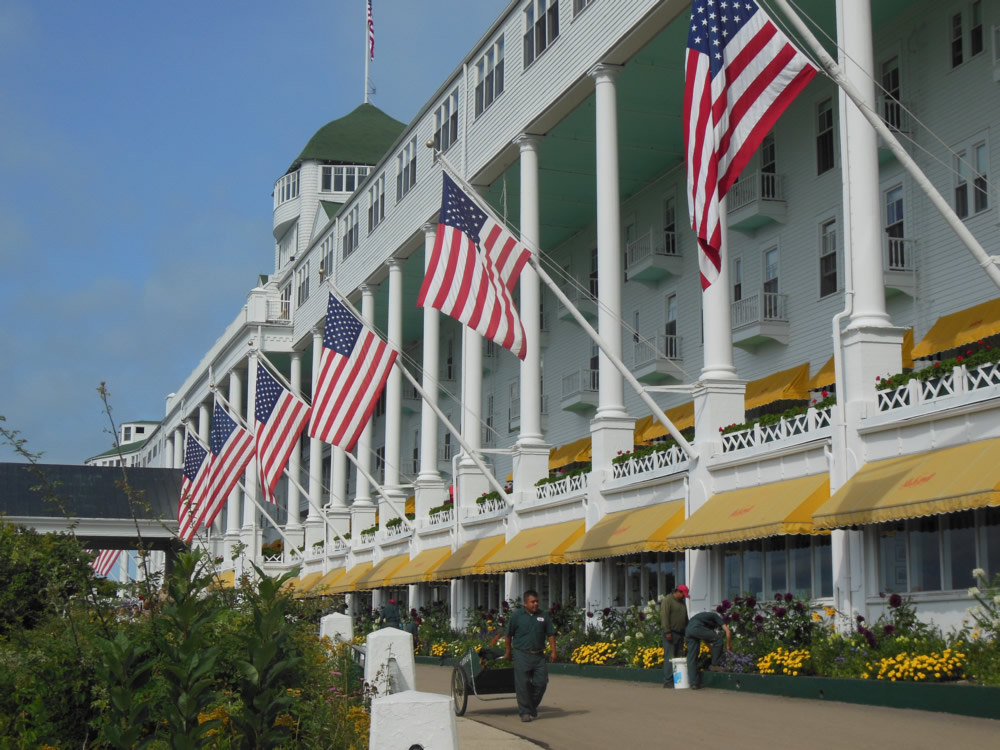

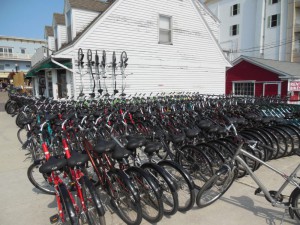
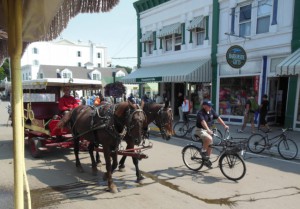








Follow Us